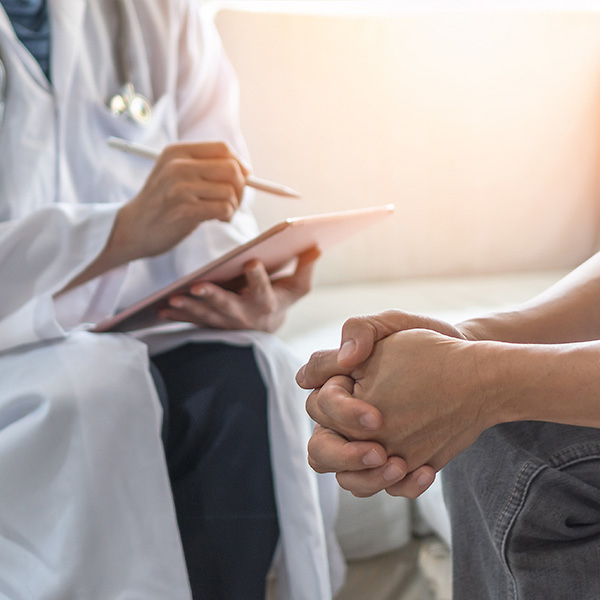Reflux Laryngitis (LPRD)
Overview and Facts about Reflux Laryngitis
Reflux laryngitis, also known as laryngopharyngeal reflux disease (LRPD), is defined as irritation and inflammation of the voice box caused by stomach acid repeatedly backflowing into the pharynx (the part of the throat behind the mouth and nasal cavity and above the esophagus).
Stomach fluids contain acids and enzymes to help digest food. These fluids can cause problems when they travel to other parts of the body, such as the throat and vocal box (larynx).
Symptoms and Signs of Reflux Laryngitis
Symptoms of reflux laryngitis are felt in the throat and include:
- Hoarseness
- Dry cough
- Frequent throat clearing
- Sensation of having something stuck in the throat
- Post-nasal drip and/or excessive mucus
- Difficulty swallowing
- Red, swollen or irritated voice box
- Bitter saliva
Tests and Diagnosis of Reflux Laryngitis
Reflux laryngitis is diagnosed by a specialist in otolaryngology (ENT) based on symptoms of irritation or swelling in the throat and the back of the voice box. Other tests used to make an accurate diagnosis include:
- Flexible laryngoscopy: A flexible scope is inserted through the nose to look at the throat, pharynx and larynx. This study gives basic information regarding the form and function of the throat structures.
- Esophageal pH testing: measures and records the pH (level of acid) in the esophagus.
- Video swallow study (Modified barium swallow): A speech pathologist watches swallowing occur under x-ray when foods and liquids coated with barium (a white, pasty material) are given. The speech pathologist monitors, records and evaluates how different consistencies of swallowed material is processed from the mouth to the beginning of the esophagus.
- Transnasal esophagoscopy (TNE): A flexible scope with a camera is inserted through an anesthetized nose and fed through the throat, into the esophagus and to the stomach. This screening tool is useful in evaluating the esophagus in patients with acid reflux, throat pain and swallowing symptoms.
- Upper GI endoscopy (EGD): a thorough procedure to look inside the upper digestive tract including the esophagus and stomach, performed when a patient complains of difficulty swallowing.
- Esophageal Manometry: A small catheter is inserted into the esophagus in our gastroenterology department to measure the strength and coordination of the muscle contractions of the esophagus. This gives information regarding the functioning of the esophagus.
Causes and Risk Factors of Reflux Laryngitis
Reflux laryngitis occurs when the lower esophageal sphincter—the muscle that prevents stomach acid and contents from flowing back up into the esophagus—fails to close correctly. As a result, acid travels into the back of the throat or voice box, or even into the back of the nasal airway.
Risk factors for developing this condition include:
- Eating highly acidic or spicy foods
- Being overweight
- Consistently wearing tight clothing
- Being overstressed
- Eating right before lying down to sleep
Treatment and Care for Reflux Laryngitis
Lifestyle changes and medications are the primary ways reflux laryngitis is treated. Lifestyle changes include:
- Avoiding foods that cause acid reflux such as caffeine, chocolate, mint, alcohol, tomatoes, citrus fruits and spicy foods.
- Eating smaller meals more frequently throughout the day
- Not eating at least three hours before going to bed
- Quitting smoking
- Elevating the head with pillows four to six inches high when lying down
- Losing weight if overweight
- Avoiding wearing tight or binding clothing
Medications such as proton pump inhibitors (PPIs) or H2 blockers may also be recommended. PPIs and H2 blockers work by reducing the amount of stomach acid made by glands in the lining of the stomach.
Surgery is needed in severe cases or when medications do not resolve symptoms. The recommended surgery, a laparoscopic Nissen fundoplication, is a minimally invasive procedure that strengthens the lower esophageal sphincter to restore normal functioning.

Request an Appointment
We’ve made it easy to see a Loyola Medicine health care expert with a variety of convenient appointment options. Discover which way is easiest for you. Schedule an appointment today.
